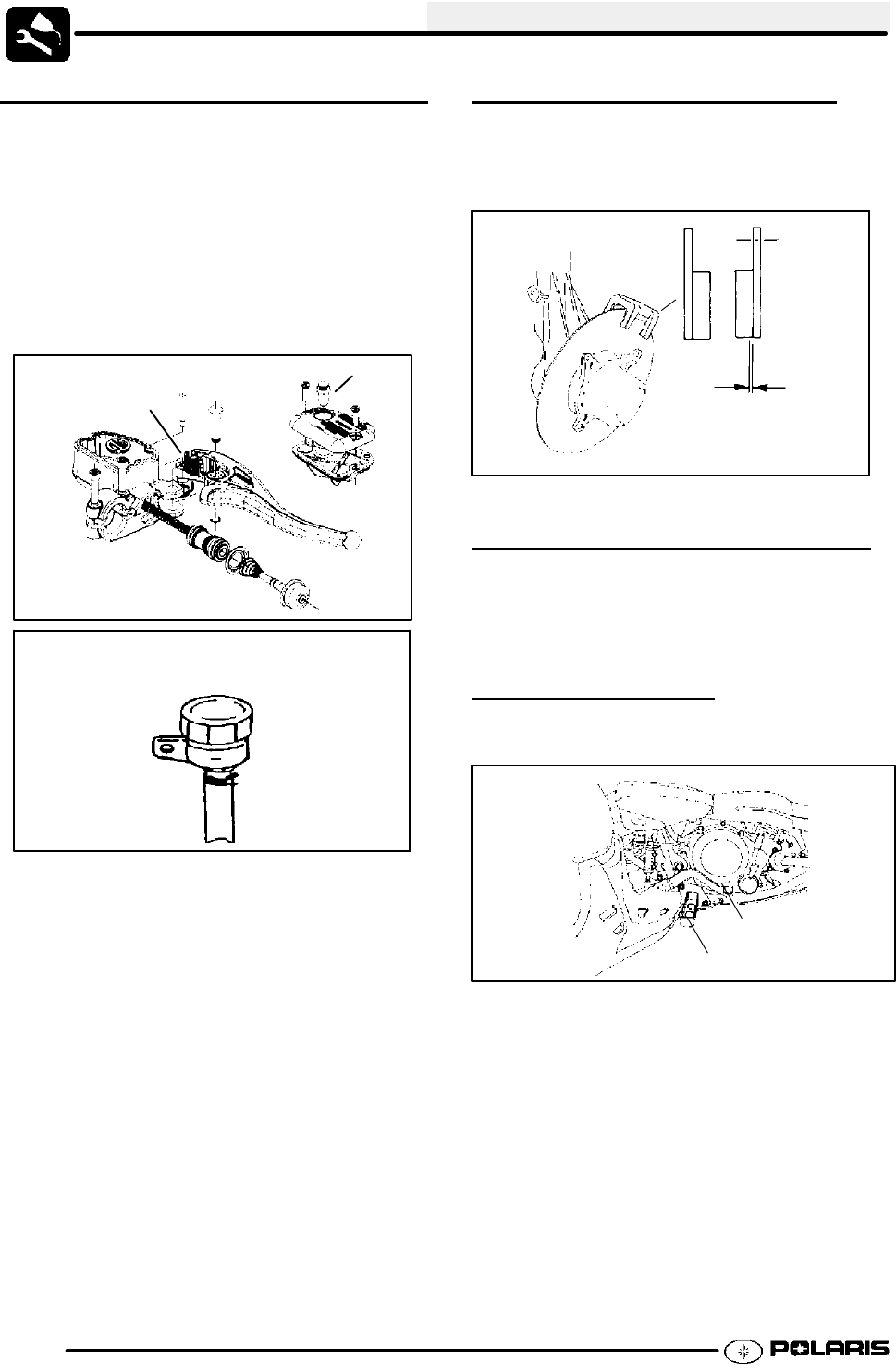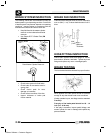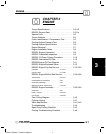
MAINTENANCE
2.22
BRAKE SYSTEM INSPECTION
The following checks are recommended to keep the
brake system in good operating condition. Service life
of brake system components depends on operating
conditions. Inspect brakes in accordance with the
maintenance schedule and before each ride.
G Keep fluid level in the master cylinder
reservoir to the indicated level inside
reservoir.
G Use Polaris DOT 3 Brake Fluid (PN
2870990).
Parking Brake
Lock
Sight
Glass
Min
Max
Rear Master Cylinder Reservoir
G Check brake system for fluid leaks.
G Check brake for excessive travel or
spongy feel.
G Check friction pads for wear,
damage or looseness.
G Check surface condition of the disc.
G Inspect thickness of brake pad
friction material.
BRAKE PAD INSPECTION
Pads should be changed when the friction material is
wornto3/64s (.1 cm), or about the thickness of a U.S.
dime.
3/64s
(.1cm)
Minimum
Thickness
HOSE/FITTING INSPECTION
Check brake system hoses and fittings for cracks,
deterioration, abrasion, and leaks. Tighten any loose
fittings and replace any worn or damaged parts.
BRAKE TESTING
The foot brake should be checked for proper function.
1
2
When applied, the brake power should be sufficient
enough to stop the wheels under most conditions.
If brake operation is poor, two things must be examined:
Free Play:
Free play of the brake pedal should be 1/8 - 1/4
inch (3.2 - 6.35 mm).
If free play is excessive, inspect pedal, linkage, and
master cylinder for wear or damage and replace any
parts as needed.
Enfocus Software - Customer Support


















